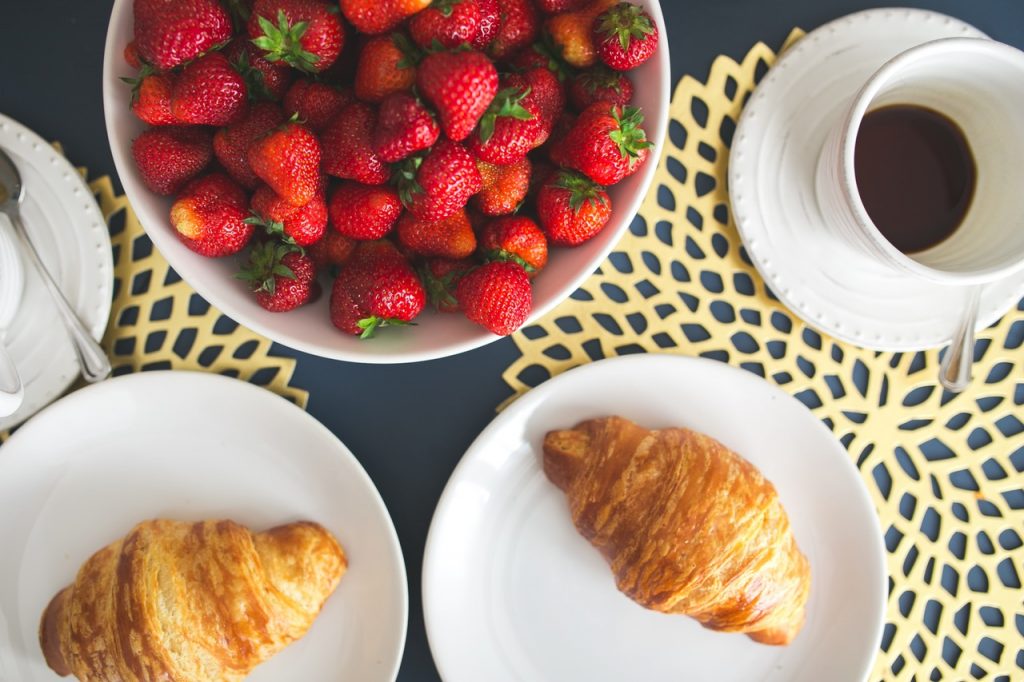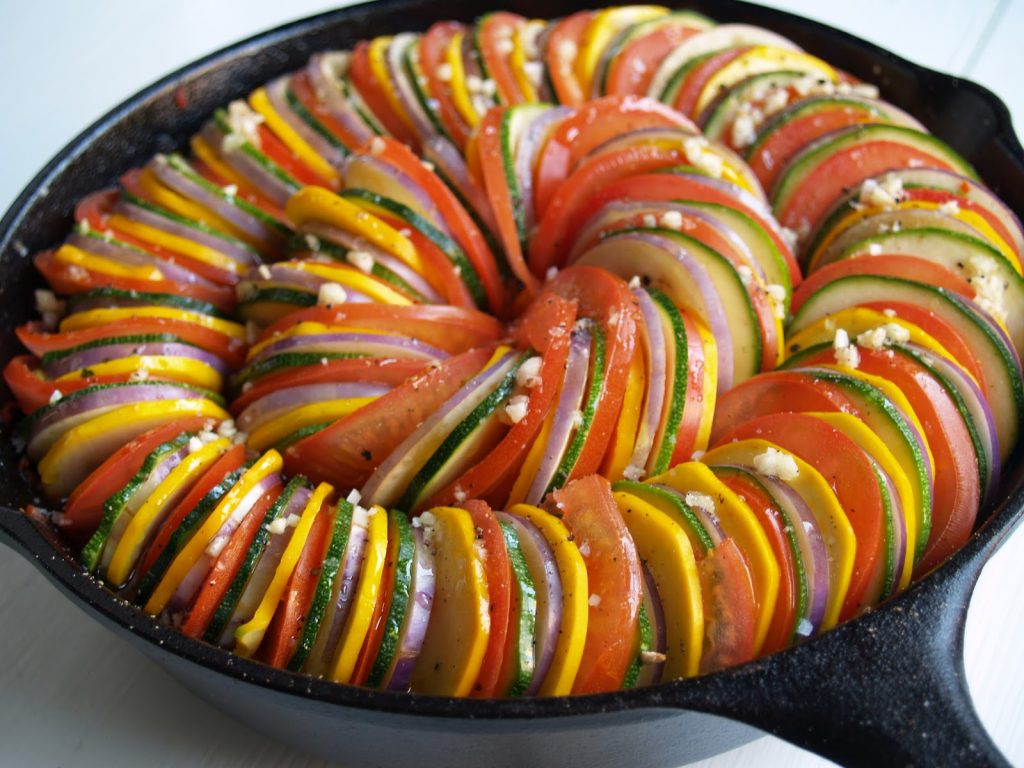After buying a home in the South of France, we’re certain you’ll be eager to settle in and begin embracing the French way of life. This article is part of a series on adjusting to life in the South of France. You can read the first entry, on the French education system, here.
There is perhaps no aspect of French living that is more renowned and revered than French cuisine. In fact, the “gastronomic meal of the French” was added to UNESCO’s Representative List of the Intangible Cultural Heritage of Humanity in 2010. This indicates its global significance and its need to be safeguarded as a tradition.
The Structure of French Meals
The image of a French woman sipping café au lait and delicately nibbling a croissant outside a bistro has been immortalised in pop culture. You would be forgiven for believing that everyone living in France begins their days with a lavish selection of buttery pastries. In truth, this is an occasional treat reserved for weekends. The usual breakfast (le petit déjeuner, literally “small lunch”) is a much simpler affair.
The average French breakfast will be a meal consisting of sliced baguette or brioche topped with butter and jam or honey, accompanied by a cup of tea or coffee and sometimes juice. Savoury dishes include bread with soft cheese and ham dipped into soft-boiled eggs, bread served with pate and charcuterie or, for a “fancier” meal, bread (are you noticing a trend here?) in the form of a croque-monsieur or croque-madam served with bacon, salmon or an omelet.
The French lunch (le déjeuner) may seem like a dream come true if you’re more used to chomping through a sandwich (and a piece of fruit if you were feeling especially virtuous) at your desk. Throughout the South of France and in many smaller towns across the country, it is customary to take a two-hour break for lunch, and have a three-course meal. The meal will typically start with a salad or soup, followed by a main of meat or fish accompanied by vegetables, rice or pasta. A cheese course and/or dessert will be served last.
The majority of students and many employees will eat at a cafeteria located in the school or workplace. Where a company does not have a cafeteria, they are required by law to provide vouchers that can be exchanged at nearby restaurants and supermarkets. For many French people, lunch is the largest meal of the day, which some believe is part of the reason that the French are traditionally slim-figured.
Dinner (le dîner) is also typically three courses with the same structure as lunch. There’s really no such thing as typical French dinner, as the main course will vary greatly depending on the season, availability of local produce and the region of France in which it is prepared.
Snacking is rare, with many French people preferring to eat only at meal times. The exception is children, who will often have a small sweet snack (such as fruit or yoghurt) in the afternoons.
South of France Cuisine
Buying a home in the South of France comes with the bonus of exposing yourself to some of the best foods that France has to offer.
Being so close to Italy, mediterranean flavours and cooking styles permeate South of France cuisine. If your home is close to the coast, you’ll also be in the seafood capital of France, so expect to see many meals starring shellfish and beaucoup de poissons (a lot of fish!). Dishes are bright, flavourful and aromatic, thanks to the huge variety of herbs that grow in abundance.
If you’re not a fan of seafood, there are plenty of other options available, including the world-famous ratatouille and salade niçoise. Lamb is the most popular meat, featuring in a variety of stews. Like so much of French cooking, garlic features heavily.
We can only scratch the surface on a subject as vast and nuanced as French cuisine, but we hope this article has helped provide an overview as to what you can expect after moving.
If you would like advice on buying a home in the South of France, chartered surveyor Charles Mackintosh would be happy to help. Please get in touch through his online contact form, send an email to charles@mackintoshfrance.com, or give him a call on +33 (0) 493 421 083.


